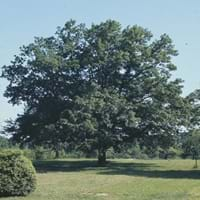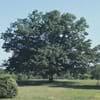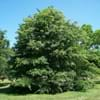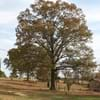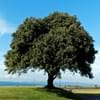Life Span
Perennial
Perennial
Origin
Central Asia, India, Nepal, China, Japan, Korea
Hybrid origin
Types
Not Available
Victoria Rhubarb
Colorado Red Rhubarb
Turkish Rhubarb
Number of Varieties
Not Available
Habitat
Dappled Shade, Sunny Edge, Woodland Garden Secondary
gardens, Grassland, Humid climates, Tropical regions, Urban areas
USDA Hardiness Zone
5-9
5-8
Sunset Zone
2a, 2b, 3a, 3b, 4, 5, 6, 7, 14, 15, 16, 17
2b, 3a, 3b, 4, 5, 6, 7, 14, 15, 16, 17
Habit
Oval or Rounded
Clump-Forming
Flower Color
Red, Light Green
Light Pink
Flower Color Modifier
Bicolor
Not Available
Fruit Color
Sandy Brown
Burgundy
Leaf Color in Spring
Light Green, Dark Green, Yellow green
Green, Dark Red
Leaf Color in Summer
Green, Dark Green
Green, Dark Red
Leaf Color in Fall
Yellow, Brown, Sandy Brown
Green, Dark Red
Leaf Color in Winter
Not Available
Light Green
Leaf Shape
Saw-tooth like
Compound
Plant Season
Spring, Summer, Fall
Spring, Summer, Fall
Sunlight
Full Sun, Partial Sun
Full Sun, Partial Sun
Type of Soil
Clay, Loam
Clay, Loam
The pH of Soil
Acidic, Neutral
Acidic, Neutral, Alkaline
Soil Drainage
Well drained
Average
Bloom Time
Late Spring
Summer, Late Summer
Tolerances
Not Available
Drought
Where to Plant?
Ground
Ground
How to Plant?
Seedlings
Stem Planting
Plant Maintenance
Medium
Medium
Watering Requirements
Average Water Needs, Do Not over Water
Do Not over Water, Requires regular watering, Use Mulches to help prevent water loss during hot and windy weather, Water Deeply
In Summer
Lots of watering
Lots of watering
In Spring
Moderate
Moderate
In Winter
Average Water
Average Water
Soil pH
Acidic, Neutral
Acidic, Neutral, Alkaline
Soil Type
Clay, Loam
Clay, Loam
Soil Drainage Capacity
Well drained
Average
Sun Exposure
Full Sun, Partial Sun
Full Sun, Partial Sun
Pruning
Remove damaged leaves, Remove dead branches, Remove dead leaves
Remove damaged leaves, Remove dead branches, Remove dead leaves
Fertilizers
Apply 10-10-10 amount, Apply 18-8-3 amount
All-Purpose Liquid Fertilizer
Pests and Diseases
No serious insect or disease problems
Red blotch
Plant Tolerance
Drought
Drought
Flowers
Insignificant
Showy
Flower Petal Number
Not Available
Not Available
Foliage Texture
Coarse
Coarse
Foliage Sheen
Glossy
Glossy
Attracts
Beetles, Butterflies
Not Available
Allergy
Not Available
Skin irritation
Aesthetic Uses
Not Used For Aesthetic Purpose
Showy Purposes
Beauty Benefits
Not Available
Not Available
Environmental Uses
Air purification
Air purification
Medicinal Uses
Astringent
Not Available
Part of Plant Used
Leaves, Seeds
Whole plant
Other Uses
Used as a dyestuff, Used as a thickening in stews, used for fuel and charcoal, Used for making black dye
Culinary use, Used as Ornamental plant
Used As Indoor Plant
No
No
Used As Outdoor Plant
Yes
Yes
Garden Design
Feature Plant, Shade Trees
Feature Plant, Mixed Border
Botanical Name
QUERCUS acutissima
RHEUM 'Ace of Hearts'
Common Name
Sawtooth Oak
Ace of Hearts Ornamental Rhubarb, Ornamental Rhubarb
In Hindi
Sawtooth Oak
सजावटी प्रकार का फल
In German
Sägezahn- Eiche
Ornamental Rhabarber
In French
Sawtooth Oak
rhubarbe ornementale
In Spanish
diente de sierra de roble
Ornamental de ruibarbo
In Greek
πριονωτή Oak
καλλωπιστικά Ραβέντι
In Portuguese
Sawtooth Oak
ornamental ruibarbo
In Polish
piłokształtny Oak
ozdobne Rabarbar
In Latin
Quercus acutissima
decentius Rhubarb
Phylum
Magnoliophyta
Tracheophyta
Class
Magnoliopsida
Not Available
Order
Fagales
Caryophyllales
Family
Fagaceae
Polygonaceae
Clade
Angiosperms, Eudicots, Rosids
Angiosperms, Core eudicots, Eudicots
Tribe
Not Available
Not Available
Subfamily
Fagoideae
Not Available
Number of Species
Not Available
Importance of Sawtooth Oak and Ornamental Rhubarb
Want to have the most appropriate plant for your garden? You might want to know the importance of Sawtooth Oak and Ornamental Rhubarb. Basically, these two plants vary in many aspects. Compare Sawtooth Oak and Ornamental Rhubarb as they differ in many characteristics such as their life, care, benefits, facts, etc. Every gardener must at least have the slightest clue about the plants he wants to plant in his garden. Compare their benefits, which differ in many ways like facts and uses. The medicinal use of Sawtooth Oak is Astringent whereas of Ornamental Rhubarb is Not Available. Sawtooth Oak has beauty benefits as follows: Not Available while Ornamental Rhubarb has beauty benefits as follows: Not Available.
Compare Facts of Sawtooth Oak vs Ornamental Rhubarb
How to choose the best garden plant for your garden depending upon its facts? Here garden plant comparison will help you to solve this query. Compare the facts of Sawtooth Oak vs Ornamental Rhubarb and know which one to choose. As garden plants have benefits and other uses, allergy is also a major drawback of plants for some people. Allergic reactions of Sawtooth Oak are Not Available whereas of Ornamental Rhubarb have Skin irritation respectively. Having a fruit bearing plant in your garden can be a plus point of your garden. Sawtooth Oak has showy fruits and Ornamental Rhubarb has showy fruits. Also Sawtooth Oak is not flowering and Ornamental Rhubarb is not flowering . You can compare Sawtooth Oak and Ornamental Rhubarb facts and facts of other plants too.
